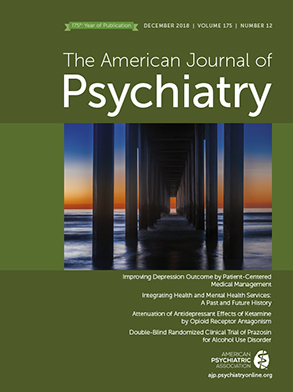To enter the scholarly world of Otto Kernberg as presented in this opus is to have the privilege to walk through and study the home of a master architect. It reflects a life’s work of clinical experience and scholarship. I will walk us through the many rooms of this edifice, pointing out both the overarching themes as well as the nuanced gems. I will also take note of those spaces that are as yet unfinished.
As with any tour of a masterwork, everyone attends to aspects of the space that resonate with their own background, expertise, and, in this case, clinical experience. This edifice offers something for everyone, but the rewards will be greatest for those well-schooled in the understanding of the dynamic mind especially as it applies to the work with tormented individuals.
The scope of this work is broad. As early as page 4, the author distinguishes this effort from earlier analytic works in this area, finding that they suffer from “reductionism in the development of theoretical frames.” He goes on to say that “the neglect of neurobiological determinants of motivational systems … has made any efforts to construct a satisfactory purely psychoanalytically informed theory of personality and personality disorders clearly inadequate” (p. 4). I will return to this issue at a later point.
The early chapters represent in my allegorical house the basement of this work. Descriptions of personality development, DSM controversies, and neurobiological correlations will offer fascinating reading to those with these specific areas of interest. This also applies to the final chapter on psychoanalytic education. These gird the rest of the structure but speak best to the plumbers and electricians among us who know those languages well and find the intricacies of interest. Others may choose to enter at the foyer level where we find a welcoming introduction to psychodynamic technique. Familiar notions of free association and analysis of the treatment relationship are clearly described with special application to the work with these patients, one of the author’s singular contributions to our field. An easily missed gem in this entranceway is the succinctness with which the text captures a common clinical challenge we face in our work with fragile patients—when patients are caught in a “regression to symbiotic relations, in which the patient cannot tolerate any differences of views and relatedness in the therapist, [they] experience all triangulations as intolerable traumatic situations. The interpretation and working through of these primitive transference regressions may represent the dominant therapeutic feature of these cases” (p. 60).
Throughout this work, the author is clear in his differentiation of alternative psychoanalytic approaches; that is, relational, Kleinian, Bionian, French. He shares with us his deep understanding of their various strengths and limitations. With more challenging patients, those who through “subtle (or not so subtle) efforts to influence the analyst by means of projective identification and omnipotent control foster enactments and intense and shifting countertransferences” (p. 59), he recommends transference-focused psychotherapy. This approach differs from standard treatment by its privileging the protection of the frame over the maintenance of “technical neutrality.” He contrasts and prefers this transference-focused approach to the well-known mentalization-based therapy. In a refreshing departure from what too often becomes theological arguments, where vociferousness obscures the absence of meaningful data, he reports that “we have empirical data showing that [transference-focused psychotherapy], indeed, produces increased mentalization in borderline patients, leading to an increase in their capacity for realistic assessment of self and others as consequence of identity integration” (p. 66). This well-lit transparency between differing approaches, even if at times it is too sharply drawn, can serve as a model for future research on best practices.
In an edifice of this scale, there are several vast and impressive spaces that are rich with clinical wisdom and are worthy of study. Before mentioning some particulars in those major spaces, I’d like to focus on two easily overlooked smaller chapters, which will reward quiet immersion.
The first of these is chapter 10, which studies in exquisite detail the impact of narcissistic defenses in the patient’s life and then in the treatment relationship. The therapist has the signature experience of, at times quite suddenly, feeling alone in the room, which serves as a countertransference signal for the patient’s syntonic withdrawal into defensive self-sufficiency. Such illusory protection hides from patients, and initially from their analyst, their longings for dependency and authentic love. In place of these object-directed affects, which commonly were not treasured in their childhoods, these individuals sought the best adaptation they could muster: self-infatuation (albeit often quite critical) and an endless search for admiration. The therapist’s use in real time of these countertransference signals of feeling ignored in the treatment “may be a crucial precondition for the [patient’s] discovery of those hidden moments of recognition of the analyst’s authentic interest, which, however, the patient cannot tolerate” (p. 190). The intolerance of this mutuality is often ironically accompanied by patients’ bitter complaints that the therapist isn’t warm or caring enough. Indeed, we must be prepared for “months of hopefulness and occasional experiences of emotional closeness [to] shift again into disappointing disengagement by the patient, and the analyst is faced with a new wave of empty trivialities filling the sessions” (p. 189). This text’s close monitoring of the affective dance between patient and therapist would have been enlivened by providing he said/she said process material. As it is, I found the descriptions to be deeply familiar, helpfully elaborated, and theoretically broadening.
The other little gem in this work that I treasured is the chapter titled “The Denial of Reality.” Here again, as is so common in the work with regressed individuals, the study of one’s countertransference is key to the deepening of the treatment. In this case it is the analyst’s confusion that serves as the signal that something isn’t quite making sense. Often this is a response to the patient’s casual presentation of at times bizarre distortions of reality. These may be “by the way” mentions of strange politics in their workplace, odd misreads of friends’ affects, and, eventually, peculiar management of the mechanics of the treatment. These misinterpretations of reality are syntonic, like “water to a fish,” and require the therapist to actively intervene often to prevent real damage to the person’s life. That is the technical challenge so nicely described in this chapter—to confront the distortions of reality, often through detailed questioning, while minimizing one’s intrusion into their life. The therapist’s creative ability to “imagine a better life for the patient” (p. 260) is a useful foil to the patient’s syntonic self-destructiveness. It can alert the therapist to collusive blind spots that obscure these lifelong and masochistic distortions. I’m reminded of an applicable old saw from my training: “Analysts are neutral in the face of conflict, not about facing conflict.”
In my exploration of this allegorical home, I have felt welcomed, educated, and inspired. I also began to discover spaces with fragile and incomplete supports. This concerned me, as the rooms that were unfinished contained weight-bearing walls that serve as essential pillars to support the entire structure. I first encountered this incompleteness in the description of somatization. It was recognized that such symptoms may be “physical manifestations of anxiety and depression.” The recommended intervention is that they “be interpreted as part of the defensive and impulsive manifestation of the internalized object relations in the transference” (p. 97). This seemed accurate to me but significantly incomplete. The recommendation to exclusively focus on interpretive interventions ignores the frequent presence in these conditions of a treatable depressive illness. The introduction of psychotropics can accomplish a great deal toward the relief of suffering for what used to be called “depressive equivalents.” In my and other analysts’ clinical experience, pharmacologic treatment can add buoyancy to optimistic affects, which in turn empowers them as allies in the face of regression. This can facilitate the capacity to meaningfully engage in an interpretive experience.
My unsteadiness in this part of the building continued. “Pervasive acting out, dissociated affect storms, severe paranoid transference developments, and somatization, all related to primitive defensive operations, also threaten the social survival of these patients” (p. 137). The differential diagnosis of these dangerous symptoms includes but is not limited to personality disorders. It also includes, again, affective disease. We are well advised to maintain a high index of suspicion for the most treatable condition with which we are faced. Pharmacologic treatment of affective disease may take months. Interpretive treatment of a personality disorder takes years. Our task is to initially treat the most treatable symptoms. Both interventions have their challenges and are most helpful when undertaken conjointly. I assume that the patients being treated at the research center described in this book receive thorough psychopharmacologic evaluation and management. As this text represents itself as a comprehensive guide to treatment, this reviewer is left unsettled in the face of the ostensible disregard of this vital aspect of patients’ care. There is much to be learned from the careful study of combined treatments.
To return to the main space. There are large sections of this work devoted to the techniques of supportive psychotherapy, the treatment of severe narcissistic pathology and eroticism in the transference and countertransference. They repay careful reading. This is also the case with the rich, indeed tender, penultimate chapter on mourning. One may have wanted more detailed study of the role of childhood trauma in the lives of these patients so prone to dissociative defenses. When trauma is mentioned, it is done in a clinically immediate fashion. Especially emphasized is the recognition of the patient’s “unconscious double identification with victim and perpetrator” (p. 237), which gets enacted in the transference in role reversals. Then, patients unconsciously treat the therapist as the victim they were. Patients need to be helped to come to terms with their internalization of the aggression that was done to them in order to fully resolve the trauma.
This work may not have fully achieved the ambitious goal set by the author on page 4. It is not a totally realized integration of neurobiologic and psychodynamic models of pathology and treatment. It is, however, a masterful summation of a life’s work carefully studying and reporting on the edges of mental functioning. Dr. Kernberg has studied the works of others, synthesized them, and added his own considerable voice to what has become the foundation of a new understanding of the mind. Dr. Kernberg’s studies on narcissism over the years have transcended the clinical world and facilitated the maturation of our culture’s self-awareness. He and his ideas have indeed become a “whole climate of opinion” that has enlightened our public discourse. As clinicians and as citizens of the world, we are in his debt.


